Competition and Community at the World Eskimo-Indian Olympics
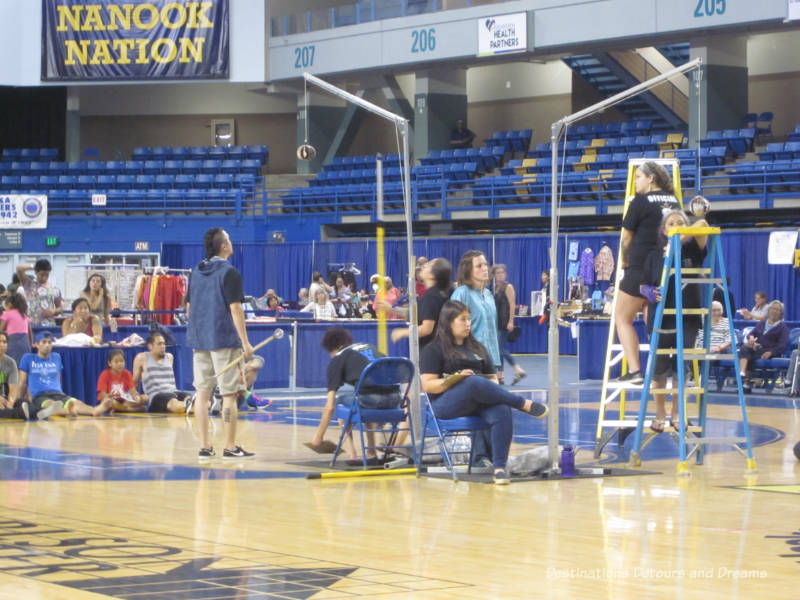
The World Eskimo-Indian Olympics are an annual event held each July in Fairbanks, Alaska
(Thanks to Explore Fairbanks for hosting my visit to Fairbanks. Observations and opinions, as always, are my own.)
Blanket toss, knuckle hop and ear pull aren’t events you’ll see on the schedule at the Olympic Games run by the International Olympic Association, but they are highlights of the World Eskimo-Indian Olympics (WEIO). The games, commonly referred to as “we-oh”, have been an annual event in Fairbanks, Alaska since 1961 and take place over four days in July. I was fortunate to be able to attend the final evening of events at the 2018 games.
The games were held at the Carlson Center, a 4,595-seat multi-purpose arena, the venue where the University of Alaska Nanooks hockey team plays home games during the winter. One half of the main arena space was dedicated to the competitions. The other half was dedicated to native arts and crafts and contained tables with a variety of items for sale.
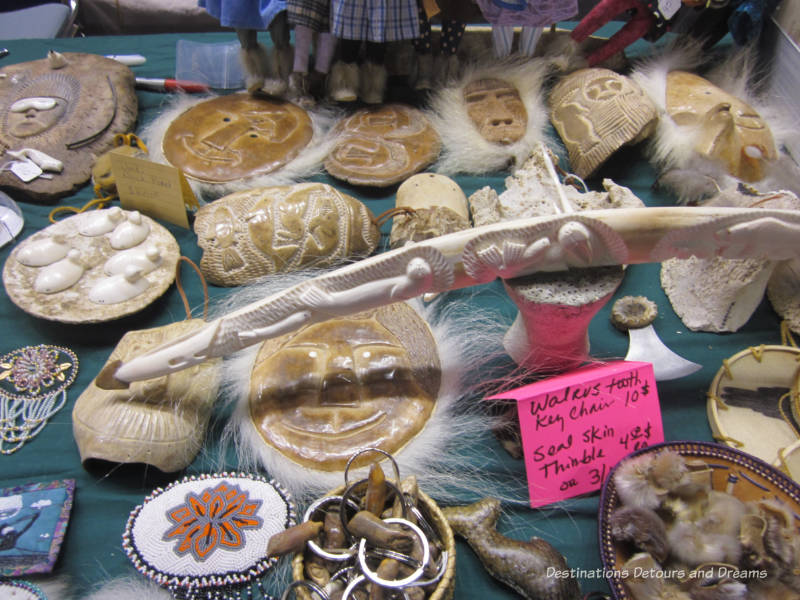
The games display the skills one needed for survival in the north and stem from age-old games of strength, endurance, balance and agility. When native peoples of the circumpolar world gathered to celebrate successful hunts and other occasions, they engaged in friendly competitions along with sharing food, entertainment and laughter. The games were also a way of teaching children.
I saw four competitions, the first of which was the Alaskan one-foot high kick. In this event, the athlete approaches a ball suspended from a pole on one foot, jumps and kicks the ball with the same foot, and lands on that same foot maintaining balance. An athlete has three attempts at each height and three minutes for each attempt. The ball is raised four inches after each successful attempt. Some competitors wore running shoes. Others competed in bare feet.
Traditionally coastal whaling villages used these kicks as a form of communication, when a messenger would run back to a village after a successful hunt and jump once in sight distance to signal a whale or other game had been caught.
Below is a brief, few second video of one woman making a successful kick.
The competition area for the one-foot high kick was split into two parts, one for the mens’ competition and one for the womens’. Women do not compete in all the sports. The organizers of the games say they continually walk a fine line in preserving past traditions between what was acceptable in the past and the reality of living in the 21st century. Rules of behaviour that included separation of activities by gender were essential for survival in a harsh environment. Therefore, participation in events traditionally reserved for men has been limited and the organization relies on advice from elders as to which activities to allow women to participate in.
The second event I saw was the blanket toss. In this event, a group of volunteers standing in a circle hold a walrus skin and move it up and down. The competitor stands in the centre of the skin and is tossed in the air and must land on his feet without falling down. The competitors can sometimes get as high as thirty feet. Arena ceilings, like the one in the Carlson Center, are high and it looked to me like the athletes came dangerously close to it. Some competitors did somersaults before landing. The effect looks much like jumping on a trampoline, but the walrus skin has no give. It is the people holding the skin who provide the springs. Competitors are judged on balance, height and style in the air.
The blanket toss was a way to have fun after a successful whaling season. It also has roots in a hunting ritual where strong people would hold a tarp and toss someone with good eyesight so they could spot game. There is a celebratory feeling to this event. I couldn’t help but smile at each toss I watched.
Below is a short video of one of the competitors in the blanket toss.
I also saw the ear weight, perhaps the oddest game and one that felt a bit painful to watch, never mind participate in. In this test of endurance derived from the ability to withstand frostbite pain, the contestant attaches a loop of twine around one ear. Sixteen one-pound weights are attached to the other end of the twine. The contestant starts in a kneeling position, stands up without touching or losing the weights, and walks as far as possible in a mostly upright position.
The last game I saw and the final competition of WEIO was the knuckle hop. This event mimics the motion of a seal on ice. A player starts face-down on the floor in a push-up position and, with a straight body and arms bent at the side resting on knuckles of clenched hands, lifts the body from the floor and hops forward landing on knuckles and toes simultaneously. Below is a short video of one contestant.
Other games include the swing kick, head pull, ear pull, seal skinning, stick pull, kneel jump, scissors broad jump, one hand reach, and drop the bomb. See the WEIO website for details of each of these competitions.
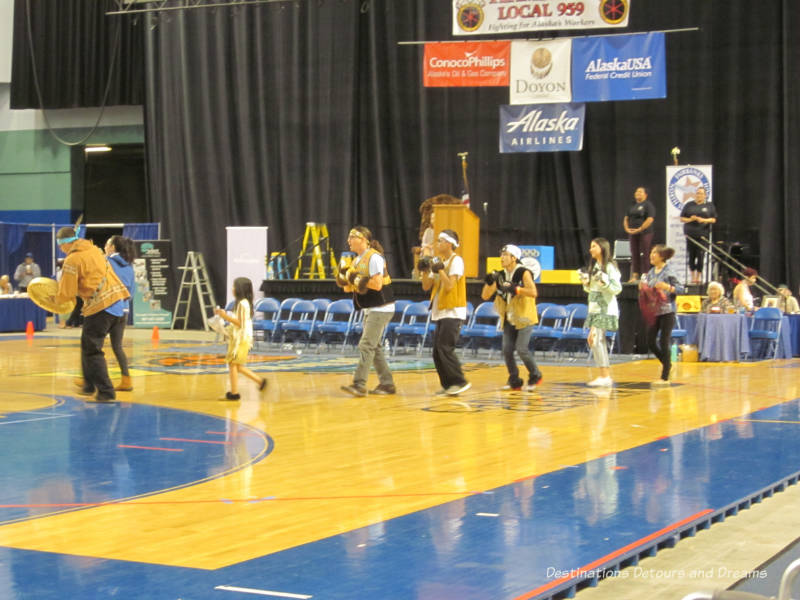
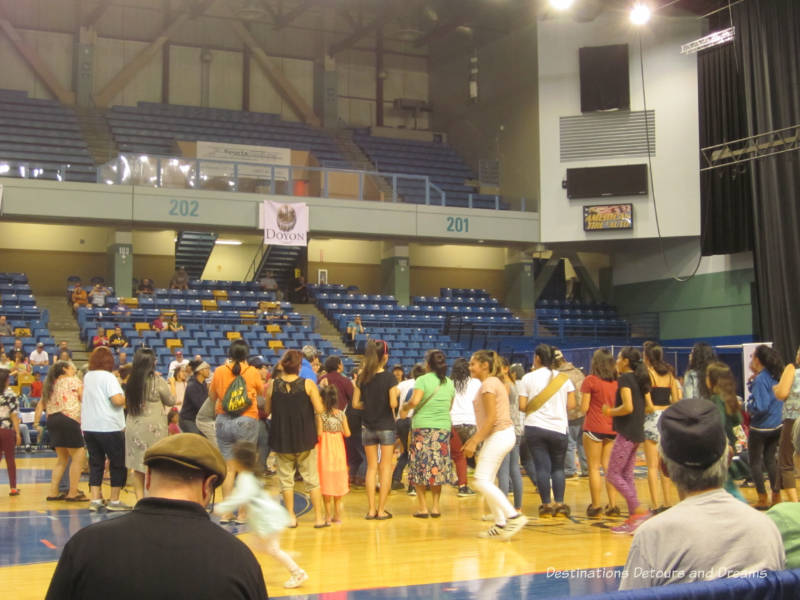
The atmosphere was as notable as the individual games. Despite competitors coming from different communities and vying against each other, the feeling was one of community and celebration. I grew up in a small town and the vibe in the arena reminded me of the feeling when townspeople gathered for a special community event. Competitors supported each other and seemed to genuinely wish each other well. Exhibitors in the arts and craft area were happy to talk to you about their work whether you planned to purchase something or not.
Another thing I noticed was the respect given to elders. There was a special entrance and special seating for elders. Volunteers offered them water and brought around carts with sandwiches. “Celebrating our Elders” was the theme of the 2018 games. In the Games program booklet, WEIO Board member Gina Kulloch said, “Learning across the generations is integral to the spirit of the games. That’s why elders being here is so special.”
A note about the name: Although the word Eskimo is still commonly used in Alaska, it is considered derogatory in Canada and other places of the world. The term Indian is also no longer acceptable in Canada. In Alaska, some native groups embrace the term while others consider it disrespectful. WEIO explains its use of terms here.
The World Eskimo-Indian Olympics are more than a competition. They are about Alaskan native communities coming together to celebrate their traditions and share their culture with each other and the world. The atmosphere is welcoming and relaxed. I encourage anyone who has the opportunity to attend.
Never miss a story. Sign up for Destinations Detours and Dreams free monthly e-newsletter and receive behind-the-scenes information and sneak peaks ahead.
PIN IT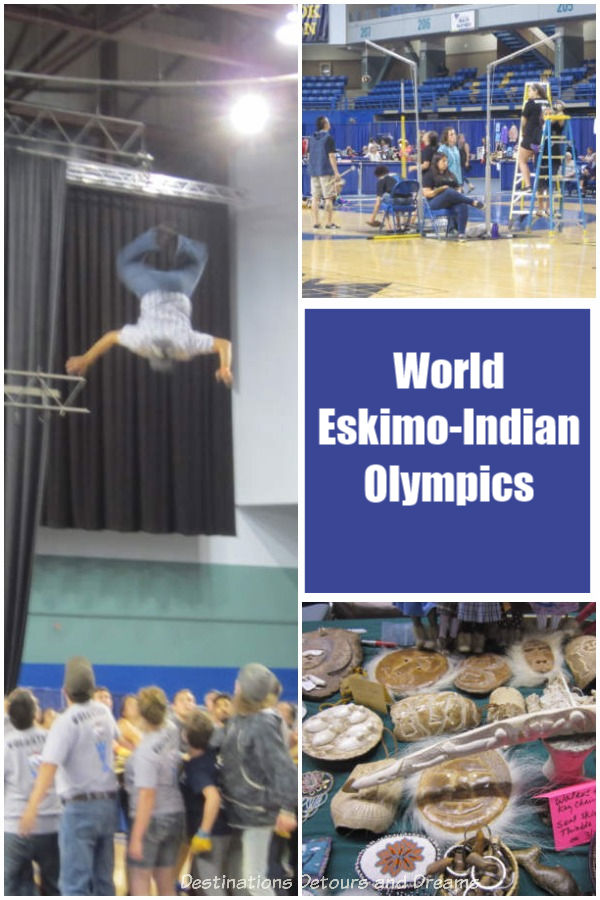

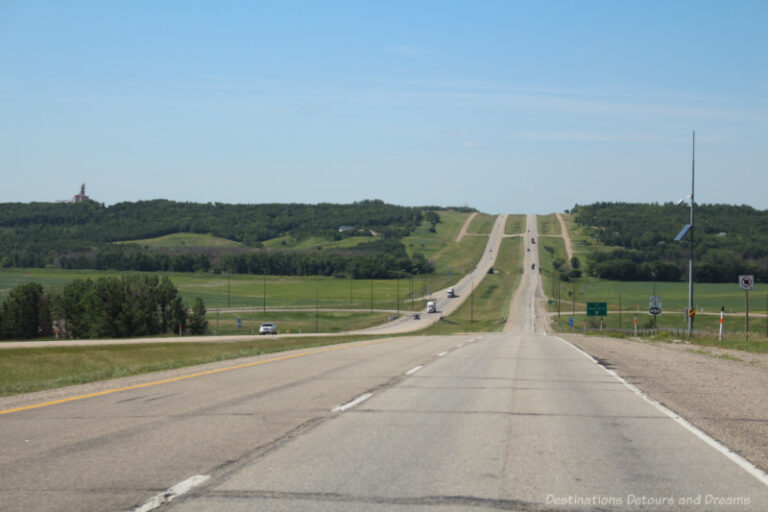





Too bad you didn’t get to see the ear pull. Can’t imagine what that one involves.
Ken, the ear pull is a game of stamina to pain where two people face each and have a “tug-of-war” with their ears. There is sinew looped around each other’s ear. It’s not something I’d want to participate in.
Thank you for the link that provided the organization’s explanation of their name. They did a good job of explaining. When I first read it I had wondered and was going to ask you, but then I found your link near the end, so question anticipated and answered. Good job!
Eva, when I mentioned the games (either before going of after seeing them) to my Canadian friends, many asked about the name and wondered why the words Eskimo and Indian were still used. I too thought the games website did a good job of explaining it.